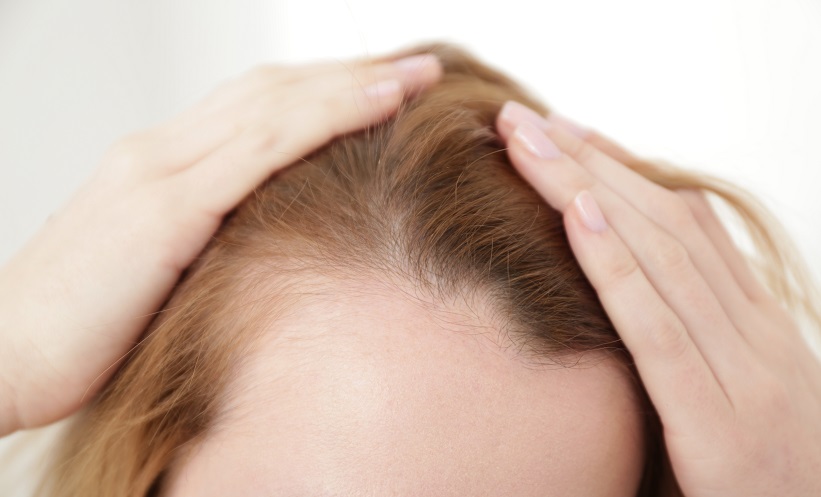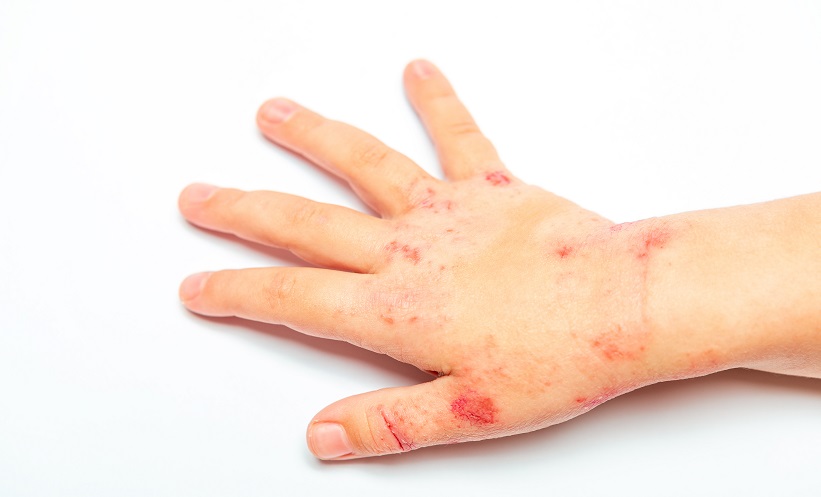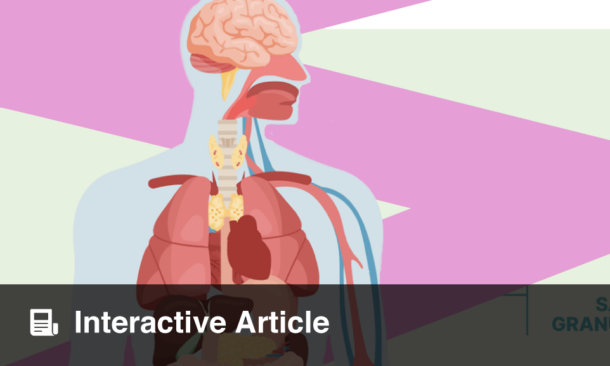The following highlights spotlight abstracts presented at the European Academy of Dermatology and Venereology (EADV) Congress 2022, specifically focusing on the latest developments in nail disorders and urticaria.
Citation: EMJ Dermatol. 2022;10[1]:10-16. DOI/10.33590/emjdermatol/10054247. https://doi.org/10.33590/emjdermatol/10054247.
![]()
The Expanding Uses of Dermoscopy
NAIL dermoscopy should be considered when examining a patient with nail psoriasis, according to an abstract presented at the EADV’s 31st congress.
Dermoscopy emerged into the field of dermatology as an aid to diagnosing cutaneous malignant tumours such as melanoma and basal cell carcinoma and pre-malignant conditions such as actinic keratosis. A noninvasive procedure, dermoscopy uses have expanded and the study authors believe that it could be used as a tool when examining nail changes that are associated with a number of dermatological conditions.
The authors evaluated the dermoscopic findings in 44 patients with psoriatic fingernails, then compared these results with the clinical findings, with the aim of determining the relationship with disease severity. Demographic data such as age, gender, disease duration, other illnesses, and medications were recorded along with psoriasis type.
The patients’ fingernails were thoroughly cleaned with spirits beforehand to remove dirt or external applications, and disease severity was determined according to the Psoriasis Area Severity Index (PASI) score. The fingernails were examined with the naked eye and dermoscopically, with the Nail Psoriasis Severity Index (NAPSI) scores being calculated clinically and dermoscopically. Pitting was the most common finding, both clinically and dermoscopically (77.27% and 86.36%, respectively). There was no significant difference in clinical and dermoscopic NAPSI (p=0.45). There was a positive correlation between clinical (r=0.458; p<0.001) and dermoscopic (r=0.421; p<0.002) PASI and NAPSI scores. Splinter haemorrhages and oil spots were seen more frequently with dermoscopy (p=0.031 and p<0.001, respectively). The latter were found more frequently after an onychoscopic examination of patients with severe cutaneous disease (PASI>10), with two novel onychoscopic findings being described for the first time.
The authors concluded that nail dermoscopy should be considered when examining a patient with nail psoriasis, as well as in cases of isolated nail involvement when the clinical diagnosis of nail psoriasis is considered suspicious.
Non-invasively Diagnosing Nail Disorders
IN CERTAIN diseases, some onychoscopic patterns are consistently seen and can be used in diagnosing a patient, stated Snehal Shelke from the Krishna Institute of Medical Science in Pune, India.
Dermatologists can find it challenging to diagnose nail disorders without invasive procedures, and nail disorders comprise 10% of all dermatological conditions. Therefore, Shelke evaluated onychoscopic patterns associated with specific nail disorders.
The study comprised of 150 patients with a history and clinical presentation that was suggestive of nail disorders, such as inflammatory disorders of the nail unit, nail pigmentary disorders, and more. Patients were recruited after confirmation of their clinical diagnosis was given and the study excluded patients with secondary modified lesions.
Wet and dry onychoscopy was performed using polarised and non-polarised modes. The DermLite DL4 (DermLite, San Juan Capistrano, California, USA) was attached to a mobile camera to take and save the dermoscopic images. When the data had been compiled, they were analysed with SPSS Statistics (IBM, Armonk, New York, USA), version 21.0.
Most patients were aged 21–50 years and there were slightly more males than females. However, females were more likely to present with green nail syndrome. The most common changes that were found onychoscopically were chromonychia, longitudinal striae, and nail plate alterations, while the latter and chromonychia were also the most common nail disorders.
Certain symptoms are associated with specific conditions. For example, jagged edges of the onycholytic plate, hyperkeratosic ruin patterns, and aurora borealis were specific to onychomycosis. If present with another disorder, it could indicate a secondary infection of dermatophytes. Inflammatory disorders associated with the nail unit, such as nail psoriasis, indicated nail plate alterations with increased fragility of the nail plate. Changes in curvature and proximal nail fold capillaries were the most common changes associated with connective tissue disorders.
Therefore, onychoscopic patterns could be used to diagnose specific conditions while avoiding unnecessary biopsies, and thus improve patient outcomes.
Novel Topical Cosmetic Plus Systemic Therapy Improves Onychomycosis Outcomes
COMBINING a topical cosmetic with systemic therapy for distal subungual onychomycosis (DSO) treatment improved the rate of healing and treatment concordance according to an abstract presented at EADV’s 31st congress, held in Milan, Italy, 7th-10th September 2022.
Onychomycosis accounts for approximately half of all nail disease and is the single most common infective nail disorder. Best treatment practices include topical and/or systemic antifungal medications as either monotherapy or combination therapy. The treatment course takes several months, a factor which contributes to reduced concordance.
A pilot study, led by Michela Starace, University of Bologna, Italy, evaluated the treatment efficacy of oral itraconazole 100 mg/day plus twice-daily application of a topical cosmetic treatment containing hyaluronic acid and Pistacia lentiscus combination therapy for 6 months, against oral itraconazole alone.
Twenty patients presenting with DSO of the same severity in two nails were enrolled to the study. All candidates received oral itraconazole, and the topical cosmetic was applied to just one of the infected nails. Patients were followed up for the 6-month treatment regimen. Photography, videodermoscopy, Global Assessment Scales (GAS), Onychoscopy Assessment Scales, and patient self–assessment scores at baseline, 3 months, and 6 months, were used to assess treatment efficacy. Of the 20 enrolled patients, 15 completed the study.
The authors found that 60% of patients displayed a marked clinical and onychoscopic improvement in nails treated with combination therapy, as highlighted by a GAS of 0 (defined as clearance of infection). In contrast, only 20% of nails treated with itraconazole monotherapy had a GAS score of 0 and 60% showed signs of residual infection.
The findings from this pilot study highlight how combination therapies can improve nail healing for patients with DSO. The authors concluded that the topical cosmetic therapy was a safe and effective treatment for DSO, and resulted in improved colour, decreased nail thickness, and reduced onycholysis. As a result of this faster healing and improved nail aesthetic, using such hyaluronic acid and P. lentiscus-containing topical cosmetic treatments could increase onychomycosis treatment concordance.
Treating Patients with Chronic Urticaria Following COVID-19 Infection Using Sequifenadine
URTICARIA is one of the most common symptoms of severe acute respiratory syndrome coronavirus 2, according to recently conducted studies. Urticaria following COVID-19 infection can last for up to 10 months.
Also known as hives, urticaria is a rash presenting with red or pink itchy bumps. Sometimes appearing as raised weals, areas of urticaria range in size, and can be as large as a dinner plate. The rash can appear on a single part of the body, or can spread across several different areas. In some patients, chronic urticaria manifests, which involves symptoms over a 6-week period or longer.
Researchers at the Ivano-Frankivsk National Medical University (IFNMU), Ukraine, studied a cohort of 14 patients aged 18–60 years who had varying severities of COVID-19 during the autumn of 2020 (asymptomatic: two patients; treated at home: seven patients; hospitalised: five patients; O2 support for 2 weeks following hospital discharge: one patient). No patient had chronic urticaria before contracting COVID-19. In each, urticaria presented as one of the symptoms of COVID-19, and lasted for more than 6 weeks.
Treatments for chronic urticaria range from rehabilitation, elimination, or significant reduction of concomitant pathology to pharmacotherapy, diet therapy, and environmental control. The study used the H1- and 5HT-serotonine receptor antagonist sequifenadine in combination therapy, with an oral dose of 50 mg twice daily for 15 days. Sequifenadine blocks histamine receptors, and reduces histamine in tissue by accelerating its destruction using diamine oxidase.
Researchers found that in 10 patients, improvement occurred on Day 2 of combination therapy, and in four patients on Day 3. On Day 2 to Day 3, itching intensity decreased significantly, the regression of urticaria was observed, and sleep was normalised. Sequifenadine had no significant sedative effect in the trial, and has a pronounced and prolonged antipruritic effect.
The study recommends that sequifenadine can be used as a combined treatment for patients with chronic urticaria following COVID-19 infection, as part of a complex therapy programme.
COVID-19 Vaccination Safe for Patients with Chronic Spontaneous Urticaria
VACCINATION against COVID-19 is safe for patients with chronic spontaneous urticaria (CSU) using omalizumab/antihistamine therapy, as shown in an abstract presented at EADV Congress 2022. Following the limited data on the effects of vaccination against COVID-19 in these patients, this study examined adverse events following immunisation, cutaneous adverse reactions, and vaccination rates, as well as potential flares following vaccination in patients with CSU on this treatment.
Through a face-to-face survey, the researchers collected demographic data, vaccination status against COVID-19, history of COVID-19 disease, post-vaccination events, and disease activation from 40 patients with a history of CSU. They then assessed the severity of disease with the Urticaria Activity Score (UAS7).
Regarding vaccination rates, 84.21% (n=32) of the participants were vaccinated, having received 2–4 doses of either CoronaVac (Sinovac Biotech, Beijing, China; 46.7%), an inactivated whole-virus vaccine, or the mRNA BNT162b2 vaccine (Pfizer, New York City, New York USA, and BioNTech, Mainz, Germany; 53.2%). They noted cutaneous adverse reactions, including mild skin symptoms, in 18.75% (n=6), 13.33% (n=4), and 20% (n=3) after the first, second, and third dose, respectively. Extracutaneous systemic mild side effects, the most common one being injection site pain, were noted in 62.5% (n=20) of participants after the first dose, 53.3% (n=16) after the second, 46.6% (n=7) after the third, and 50% (n=1) after the fourth dose.
They obtained the UAS7 from nine patients, which showed that urticaria was absent or well-controlled in all but one patient, who showed severe urticaria. No serious adverse events following immunisation or cutaneous adverse reactions were noted.
The researchers concluded that the vaccine is well-tolerated among patients with CSU receiving omalizumab/antihistamine therapy and that the treatment may even have a protective effect. Further studies should determine if the vaccine is safe for patients with CSU who are treated with monoclonal antibodies or biologicals.
A Review of Familial Aquagenic Urticaria
RESEARCHERS from the Veltischev Research and Clinical Institute for Pediatrics, Pirogov Russian National Research Medical University, Moscow, Russia, have conducted a systematic review of the condition familial aquagenic urticaria (FAU). FAU is a rare hereditary chronic urticaria, which presents as pruritic weals following exposure to water, and affects children, adolescents, and young adults.
The study aimed to characterise both the clinical features and demographics of FAU, with particular focus placed upon family history, clinical phenotypes, and diagnostic approaches. A search using the keywords “aquagenic urticaria” was conducted using PubMed, and articles published between 1964 and 2022 were included. Using this criteria brought up 73 articles: eight of these were case reports or series about FAU, and were included in the study analysis. However, studies that were unrelated to FAU were excluded, as were review articles.
In the study cohort, researchers included those affected with genetic disorders, alongside first- (parents, siblings, twins, children) and second-degree relatives (grandchildren, siblings of parents, grandparents). Overall, the study identified a total of 16 FAU cases, 12 of whom were patients, and four of whom were their relatives. Eight patients in this cohort were male, and the median age of disease onset was 15 years (range: infancy–22 years). Ten patients had disease onset before the age of 18 years.
Triggers for FAU included tap water (n=15), sweat (n=4), seawater (n=3), pool water (n=2), rain (n=1), chlorinated water (n=1), and saline (n=1). The median time to which weals presented following exposure to these triggers was 10 minutes (range: 5–20 minutes). Skin lesions were weals (n=14) or weals with papules (n=1), and were located on the trunk (n=11), neck (n=3), upper arms (n=3), shoulders (n=2), thighs (n=2), and rarely on the face and feet (n=1 in each case). Pruritis was reported in 11 cases. In all cases, urticarial lesions cleared up within 1 hour.
For testing purposes, tap water (n=12), distilled water (n=4), saline (n=1), and sweat (n=1) were used. Methods of exposure included water compresses (n=4), water-soaked gauze (n=3), showering (n=3), wet towels (n=2), and bandages (n=1). Patients with FAU were subsequently treated with sedating (n=6) or non-sedating antihistamines (n=7). Three patients were given phototherapy, and two patients from the cohort practiced trigger avoidance without pharmacotherapy.








